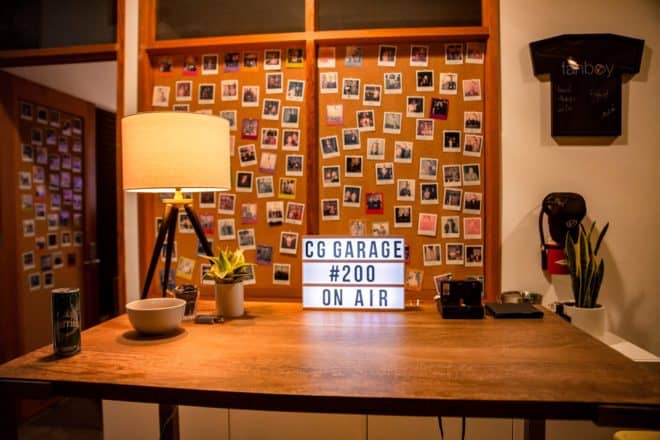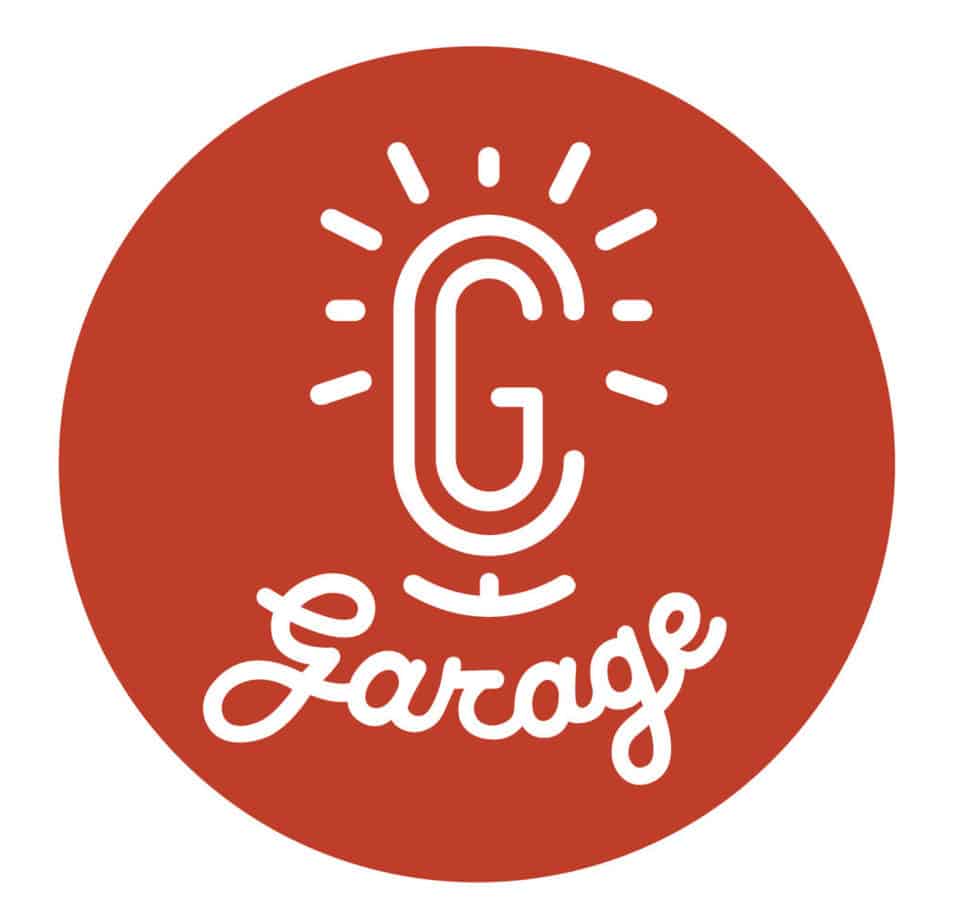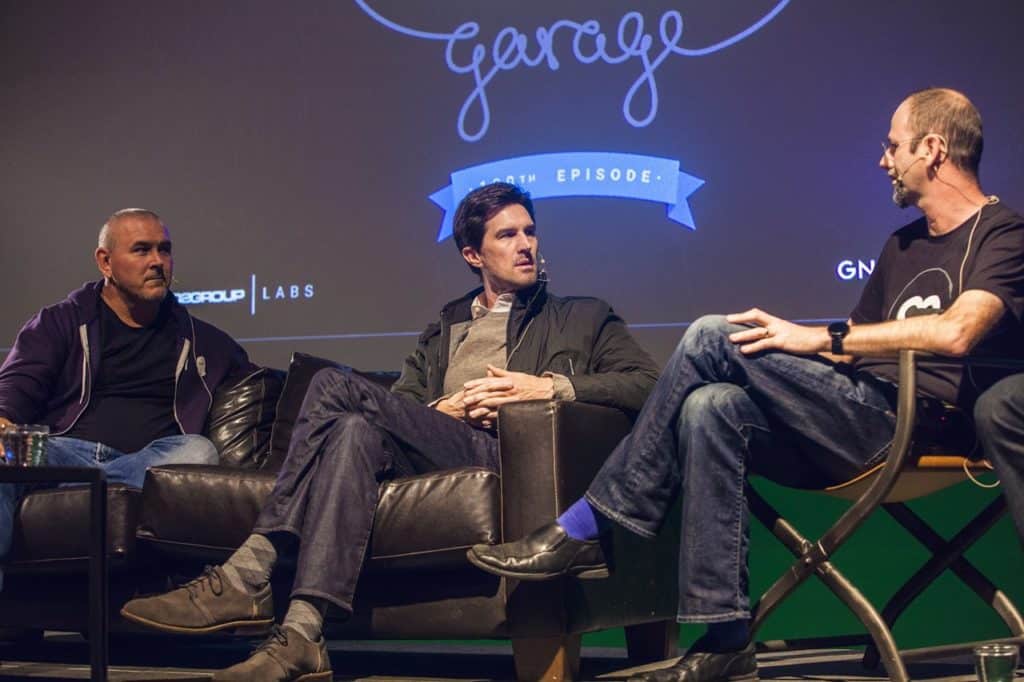Podcast Spotlight: CG Garage Podcast


Podcasts endlessly fascinate me. Because it’s such a democratic medium, we often get insights and glimpses into people, industries, and events we don’t often see in other mediums. Sure, podcasts still have mega hit true crime stories that could fit on Netflix, but we also have popular niche podcasts about design (99% Invisible), music and sound (Dissect and Twenty Thousand Hertz), and tons of other examples. Another podcast fitting this underrepresented mold is the CG Garage Podcast — a conversational podcast about the mechanisms and technology that go into CGI and movie graphics with some of the best in the industry.
The podcast arm of graphics company, Chaos Group, the CG Garage Podcast has an impressive guest list to boot including the director of Deadpool, director of Tron: Legacy, and art director for Harry Potter and Guardians of the Galaxy.
Though I know next to nothing about the graphics industry except when something looks good vs. bad, I still thoroughly enjoyed the CG Garage Podcast. It’s great to hear from people not only prolific but equally passionate about their jobs in an engaging conversation. We had the chance to exchange emails with Christoper Nichols, director at Chaos Group and host of the CG Garage Podcast. We discussed how the podcast got going, where it’s headed, and trends in the CGI industry. See below for our full Q&A.
Listen: Apple Podcasts | Stitcher | Spotify
Discover Pods: How’d you get into podcasting?
NICHOLS: My wife is also a VFX artist and spends a lot of time in a dark bay working on shots. Podcasts have been her escape for many years. She convinced me to listen to them to deal with my long drives in LA traffic. It saved my sanity. One day, as I was driving and listening to the Nerdist podcast, I realized that Chris Hardwick doesn’t actually edit any of the content, making the process of putting out a podcast much easier than I thought.
Since the barrier to entry into podcasting was fairly cheap, I asked my boss if we should try and do a podcast based on the fact that I know a lot of people in the industry. With a small investment into some good microphones and a mixing board, I started. That was over 4 years ago, and I now have over 200 episodes and have talked to some amazing guests, including many Oscar winners and some important Directors like Tim Miller (Deadpool), Joe Kosinski (Tron: Legacy, Oblivion, Top Gun 2), and Wes Ball (The Maze Runner series).

DP: In your own words, why should listeners tune in to CG Garage?
NICHOLS: I will admit, that not every episode is for everyone. But each episode can be very unique and be for a very different person. The safe bet here is if you are a CG person, almost every episode is for you. From the the very technical conversations about ray tracing technology with Vladimir Koylazov(my boss, who also won a Scientific and Technical Achievement Award from The Academy in 2017), to my conversation with Brenda Chapman, one of the first female directors in animation, who won her Oscar for the movie Brave. In other words, I think people will likely discover something new with each episode. A visual effects artist could discover that an architect is trying to solve the same problems they are dealing with around virtual reality, for instance. We’ve also tagged the episodes, so if someone finds a topic they’d like to explore, they just have to click the tag to start browsing through our back catalog. It’s pretty easy.
DP: Discussing visual effects with some industry leaders is pretty unique. Is there a common trait that links some of the most successful in the industry?
NICHOLS: Visual effects in itself is actually a fairly small industry. But there are still a few podcasts out there that discuss the subject. I know all of them, and we are all good friends. That is one thing I enjoy about podcasting: it isn’t competitive. I don’t have to compete with other podcasts for people’s attention. If you like CG, you can subscribe to all the podcasts. As such, we complement each other. However, I would say that while the CG Garage does have a lot of VFX guests, it also has a lot of architecture and architectural visualization guests, as well. Not to mention academics, movie producers like Donna Smith, and legendary photographers like Norman Seeff. If there is one common trait, it is not movie making, but how creative people who may or may not use technology achieve their vision.
DP: What upcoming trends should non-industry people — like myself — keep a lookout for in the visual world?
NICHOLS: Interesting question. Visual effects, or as the mainstream media likes to call it “CGI,” actually has been getting a bad rap. Instead of applauding the art, productions get applauded for NOT using CG in movies. You often hear things like: “Wasn’t it better when they used miniatures instead?” and “Jurassic World is a bad movie because it has too much CGI.” The fact is the CG in Jurassic World is amazing. The reason it is a bad movie is because the plot was was not very good. This is not to say that practical effects are bad, but in today’s world, as a visual effects artist, if you do your job right, no one should know that there is any kind of visual effects in the shot. The truth is that 95% of all CG goes unnoticed. That is by design. CG is not just the hero shots like Thanos or Godzilla, it is the background of nearly every shot in your favorite show.
I don’t know what is going to help mend the reputation of VFX, but I can tell you that the technology that we have today, in the hands of the right artists, can be mind blowing, invisible, and seamless. That same technology is slowly making its way into the world of real time (computer games). As such, games will be able to look as good as live-action films, and visual effects will start to be done live and on set. Ray tracing, a term that is very technical today, will become part of the common vernacular very soon, so from a trend perspective, I think it’s about people starting to see how creative technologies are changing the way they interact with art and how good that art can look.
DP: What’s the biggest challenge you face as an indie podcaster?
NICHOLS: The cool thing about podcasting is that you can do it completely independent without a large broadcast company involved. The challenging thing is that you are doing it completely independent without a large broadcast company involved. So you are forced to deal with challenges like how to promote it, how to increase your listenership, and more.
There are a few simple rules that I found helped make CG Garage a success. First, is pick a subject that is niche enough but also leave room to be broad. For example, we talk about computer graphics, but we also talk about movies in general, architecture, and more. These are subjects that my core audience enjoys, but can also reach a wider one. The second is good audio. Bad audio can lose an audience quickly. It does not have to be flawless, but good enough that the listener can feel that they are in the room with us, listening to our conversation. And last, keep a schedule and stick with it. Have consistent release dates. Don’t release 5 in a week and then wait 3 months for the next one. Find a schedule that is manageable, but stick with it like glue. The best way to do that is to save yourself a nice bank of 3 to 5 episodes that are recorded and ready to go.
DP: Where do you want to take your podcast?
NICHOLS: It is hard to say because I feel that it is in a great place where it is. I interview amazing people, I travel the globe with my portable gear and interview other amazing people when I travel. I would love to use its success to get other great guests. I have a wishlist of people I want on – people like John Carmack, Neill Blomkamp, or even Elon Musk. I also branched off and created a second podcast which is my friend Daniel Thron, Erick Schiele, and myself enjoying cocktails and talking about movies for 3 hours called Martini Giant.
DP: What other podcasts are you listening to now?
NICHOLS: My podcast playlist is fairly broad but predictable. As far as others around visual effects podcasts, there are a few good ones like Allan McKay and fxguide. For tech news, I like the Vergecast, which is also entertaining to listen to. For interviews, I listen to ID10T (formally The Nerdist). If I just need something entertaining and pointless on, I like My Dad Wrote a Porno, and Doug Loves Movies.













Comments
Comments are closed.